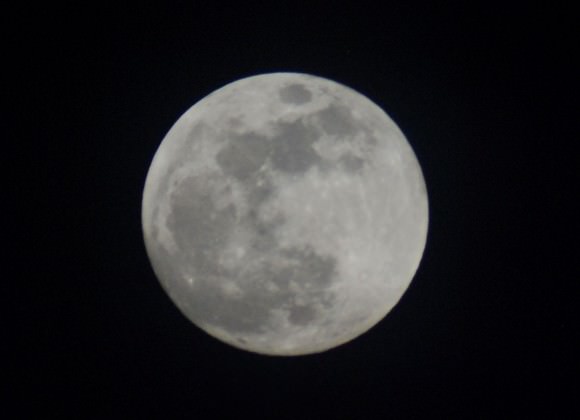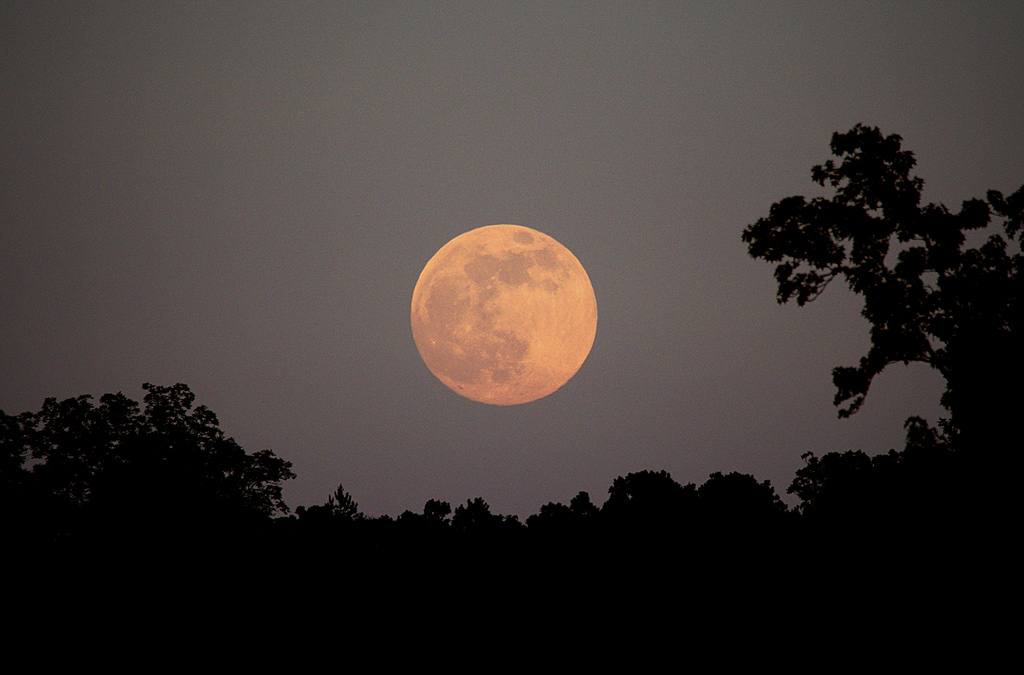Ah, Friday the 13th. Whether you fear it or it’s just your favorite slasher flick, it’s coming right around the bend later this week. And while it’s pretty much a non-event as far as astronomy is concerned, there’s bound to be some woo in the works, because the June Full Moon — dubbed the “Honey Moon” — falls on the same date.
Well, sort of. We made mention of this month’s Full Moon falling on Friday the 13th in last week’s post on the occultation of Saturn by Earth’s Moon. We’re not out to alarm any triskaidekaphobics, but we always love the chance to have some fun with calendars in the name of astronomy.
What we’re seeing here is merely the intersection of three cycles of events… and nothing more. These sorts of things can be fun to calculate and can provide a teachable moment, even when that well meaning but often misinformed relative/coworker/stranger on Twitter sends it your way . Hey, some people golf or collect steel pennies, this is our shtick.
A “Friday the 13th Honey Moon” is basically the subset of: 1. Fridays that fall on the 13th day of the month (OK, that’s two input parameters, we know) that also 2. Fall in the month of June, and 3. Occur on a Full Moon.
Friday the 13th occurs from one to three times a calendar year, so you can already see that one will occasionally happen to land on a Full Moon date fairly frequently… but how ‘bout in June? To this end, we compiled this handy listing of “Full Moons that fall on the 13th day of the month” — 15 in all — that occur from 1990 to 2030:

That’s about one every two to three years. But you have to go aaaaall the way back to June 13th, 1919 to find a Full Moon that fell on a Friday the 13th in the month of June. This will next occur on June 13th, 2098.
Of course, this is just an interesting intersection concerning the vagaries and nuances of our Gregorian calendar and the lunar cycle. You could just as easily see significance where there is none in the Full Moon coinciding with the next Superbowl or Academy Awards. Humans love to pick out patterns where often none exist.
(Fun homework assignment: When is the last/next total lunar eclipse that occurs on Friday the 13th?)
And keep in mind, the instant of the Full Moon this week occurs on Friday at 4:13 UT… this means that from the U.S. Central time zone westward, the Full Moon actually falls on Thursday the 12th.

Fun fact: the 13th falls on a Friday more than any other day of the month! It’s true… in a span of 400 years following the institution of the Gregorian calendar in 1582, Friday fell on the 13th a total of 688 times, while Thursday and Saturday the 13th fell in last place at 684.
But there’s is something else that’s special about the June Full Moon. It also falls closest to the June solstice, marking the start of astronomical northern hemisphere summer and winter in the southern. This means that the Full Moon nearest the June solstice rides at its lowest to the southern horizon for northern hemisphere observers, but is high in the sky for observers south of the equator.

The June solstice this year falls on Saturday, June 21st at 10:51 UT /6:51 AM EDT. The Full Moon closest to the June solstice is nearly, but not always, in June… It can occur up to July 6th, and the last time it fell in July is 2012 and the next is 2015. The July Full Moon is known as the Full Buck Moon.
Our good friends over at Slooh will be webcasting the Full Honey Moon this Friday the starting at 1:30 UT/9:30 PM EDT (Thursday June 12th) for two hours from its Canary Islands site and the Pontificia Universidad Católica de Chile observatory near Santiago, Chile. The broadcast will be hosted by Slooh astronomer Geoff Fox, astronomer and author of The Sun’s Heartbeat Bob Berman, and Slooh engineer Paul Cox.
Is there a connection between late spring weddings, the June Full Moon and the modern term “honeymoon”? Well, the rising June Full Moon certainly takes on an amber color for northern hemisphere observers as it rises low through the sultry summer skies. The Moon’s orbit is actually tilted five degrees relative to the ecliptic, which means it alternates from “flat” to “hilly” about every 9 years varying from 18 to 28 degrees relative to the celestial equator. We’re approaching a flat year — known as minimum or minor lunar standstill — in 2015, after which the Moon’s apparent path across the sky will begin to widen once again towards 2024.

Bob Berman has this to say about the origin of the term: “Is this Full Moon of June the true origin of the word honeymoon, since it is amber, and since weddings were traditionally held this month? That phrase dates back nearly half a millennium to 1552, but one thing has changed: weddings have shifted, and are now most often held in August or September. The idea back then was that a marriage is like the phases of the Moon, with the Full Moon being analogous to a wedding. Meaning, it’s the happiest and ‘brightest’ time in a relationship.”
It’s also worth noting the June Full Moon was known as the Strawberry Moon to the Algonquin Indians of North America. Huh… and here we thought most weddings were in May.
Whatever the case, you can get out enjoy the rising Full Moon with that significant other this week… and don’t fear the Honey Moon.


Sorry there is no full moons on Friday’s 13th in 2025 Your STARRY NIGHT Planetarium software is wrong. I know. I have the same software.
He didn’t claim that there are any full Moons on Friday the 13th in 2025.
David, thanks for the photo credit. The photo was from 2013, not 2012.
Thanks, Steve… credit fix’d!
The June full moon is Honey Moon and July is Buck Moon, are there names for the other months? Also, what is a child’s moon?
Child’s moon is the moon when seen during daylight hours. Because children should be asleep at night, and this would be the only moon they see. In the olden times, anyway…
How seriously am I to take an article written by someone who doesn’t know the difference between “parameter” and “perimeter.” Like, dude can you say , “duh!” Don’t you have a dictionary?